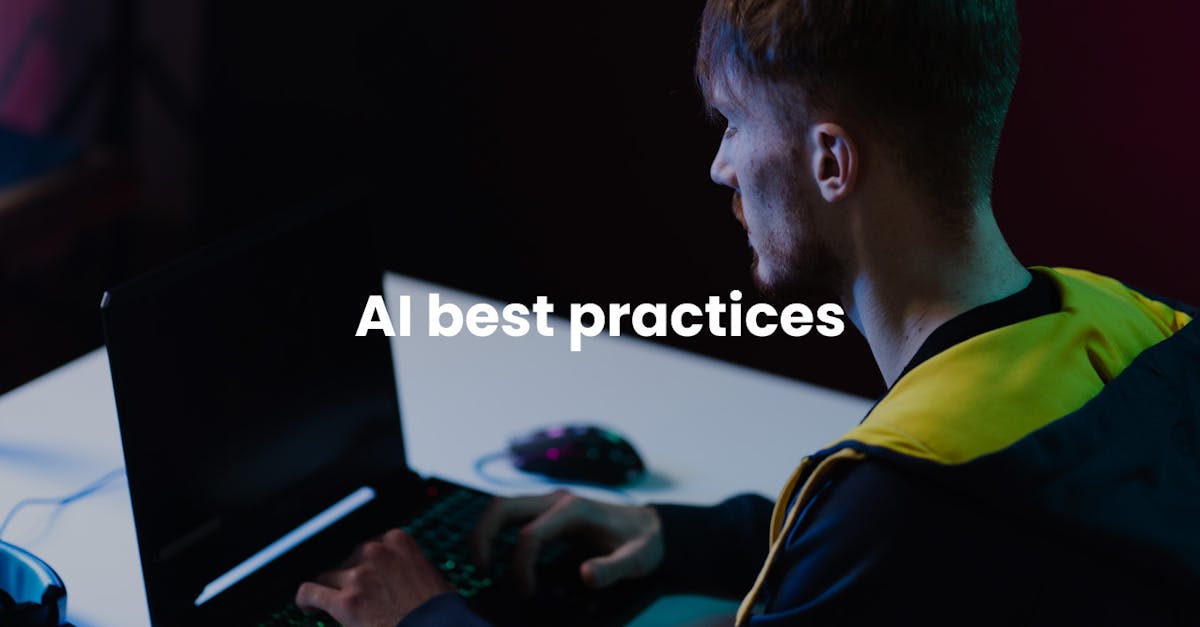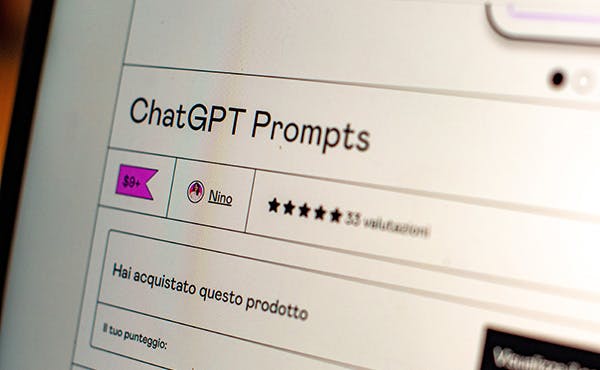10 AI best practices for businesses: Using AI safely and ethically

Artificial Intelligence (AI) is changing the game for many businesses. It allows teams to process huge volumes of data, create content quickly, and make smart decisions. This leads to streamlined operations, enhanced customer experiences, and a more competitive edge.
But here's the thing: businesses need to play it smart to really make the most of AI. They've got to follow AI best practices to make sure they're using this powerful tech in a way that's fair, trustworthy, and ethical.
Why it's important to understand the best practices for using AI?
By understanding and following AI best practices, you can make sure that all of your AI-related initiatives are carried out in an ethical and responsible manner, protecting user privacy, data, and fairness. Without a good grasp of the best practices, you’re more likely to face risks like ethical concerns, legal issues, and damage to your reputation.
Also, the field of AI is always evolving. By staying up to date and understanding the best practices, you can optimize your AI systems, make better decisions, and reduce potential risks.
Plus, with new advancements happening all the time, staying informed about the latest trends helps you adapt to changes, embrace new technologies, and remain competitive in your industry.
In this article, we're going to break down ten AI best practices that help businesses get the most out of AI while keeping any potential risks in check.
AI best practice #1 - Choose the right AI tool for your needs
It's essential to keep in mind that not all AI software is created equal. For example, you've got AI software that's fantastic at crunching numbers and extracting insights from large datasets. Then there are AI tools that excel at generating creative and engaging content, making them perfect for writing, marketing, and overall content creation.

And let's not forget about AI systems that can recognize objects, and faces, or even drive autonomous vehicles. Basically, each type of AI is designed to tackle particular tasks and challenges.
By understanding your team’s specific needs, you can pick the AI tool that best aligns with your requirements and helps you achieve your goals. For instance, if you want an AI tool that can help you speed up your course creation process, you can opt for free AI software like EdApp’s Create with AI.

This software feature lets you build courses in seconds, all from a simple prompt. With it, you can say goodbye to those frustrating moments of staring at your blank computer screen. All you have to do is type in your topic or drop a link, click the create button, and watch the automatic course creation process start.
Within a matter of seconds, you'll have captivating lessons, eye-catching slides, and interactive elements – all ready to go and make your training process a breeze.
EdApp also offers an AI translation feature, which, compared to other AI translation tools on the market, helps you translate your training into more than 100 languages. It’s highly inclusive and can be used by organizations with offices across the globe.
Join the AI revolution by adopting industry-leading AI best practices. Get started with EdApp for free.
AI best practice #2 - Set a clear AI strategy and objectives
Having a solid AI strategy in place is absolutely crucial for businesses. It's like having a roadmap that helps you identify the best applications, allocate resources smartly, and align your AI initiatives with your overall organizational goals.

When you have clear goals in mind, it becomes much easier to choose the right AI technologies and frameworks that will truly make a difference. You can concentrate your efforts on the areas where AI can bring the most value and maximize its potential.
By taking the time to establish a well-defined AI strategy, you're setting yourself up for success and making sure that your business stays on the right track! Proper objective setting also helps you and your team steer clear of any potential ethical and legal problems.
AI best practice #3 - Establish data privacy
Another AI practice that organizations need to prioritize right from the start is data privacy. To achieve this, they can start by taking steps like anonymizing user data, minimizing how much data is collected, and applying protective measures to keep it safe.

But that's not all. Organizations should also put transparency and user consent front and center. It's important for individuals, especially their customers, to fully understand what data is being collected and how it's being processed by AI systems. By being open and upfront about these activities, organizations can build trust among their customers or users.
Last but not least, companies should make sure to comply with constantly evolving data privacy regulations. By keeping a watchful eye on privacy practices and making sure they align with regulations, organizations can adapt and address any potential privacy risks that may pop up along the way.
AI best practice #4 - Strengthen security measures
Just like we lock our doors to protect our homes, businesses need to implement robust security measures to safeguard their data, and infrastructure from potential harm.

You see, AI systems can be vulnerable to attacks but they can also be misused for harm, so it's vital to be proactive and stay one step ahead of potential threats. By implementing strong security measures, you can create a shield of protection around your valuable company assets.
Regular security audits can help you constantly monitor and evaluate the security landscape. It can also identify any vulnerabilities or gaps that may exist in your organizational systems and AI tools, allowing you to patch them up before any harm can be done.
You can also take advantage of encryption techniques to keep your data under lock and key. They ensure that even if unauthorized individuals use AI to access your information, it remains unreadable and protected.
Access controls also add an extra layer of security by allowing only authorized individuals to interact with your AI systems. By carefully managing who has access and what they can do, you minimize the risk of unauthorized tampering or misuse.
AI best practice #5 - Prepare clear and concise prompts
AI tools thrive when you give them simple, clear, and precise instructions and that's where prompts come into play. Prompting in AI helps you get the most out of AI systems, guiding them to churn out relevant and accurate responses.

Think of it as pointing your AI tool in the right direction, giving you what we're looking for, and delivering exactly what you need. By crafting clear, concise, and focused prompts, you can communicate your intentions to the AI in a way that gets you the desired output.
You can then use this precise information to make better decisions and unlock innovative solutions that streamline your workflow. Mastering the art of prompting also helps reduce errors and minimize misunderstandings with AI tools.
AI best practice #6 - Review and fact-check content
Sometimes, AI tools may slip up, misunderstand context, or even rely on unreliable or biased sources. That's why it's important to double-check the facts and take a look at reliable sources before hitting that publish button.

To ensure accuracy, there are some handy tools and methods at your disposal. Fact-checking websites and online databases can be a great help in verifying information and claims in your AI-generated content.
But don't forget, good old-fashioned research can be a valuable tool in your fact-checking arsenal. Dig deeper, verify the information, and make sure your content is reliable. After all, it's your organization’s reputation on the line.
Also, giving credit where it's due is always a good practice. When you use sources to back up your AI-generated content, make sure to cite them. Apart from acknowledging these sources that give you valuable information, it also adds a touch of credibility to your work.
AI best practice #7 - Avoid plagiarism and copyright infringement
AI language models like ChatGPT are built using text input and rely heavily on previous data to generate responses. As AI language models process vast amounts of text data, they may unintentionally reproduce content that resembles existing works.

While these tools try to minimize this possibility, it's worth noting that the AI responses are generated based on patterns and examples from the training data it has been exposed to.
To make sure you’re creating content ethically, it's always a good practice to verify the originality of the AI-generated output. And, when it comes to publishing online content or writing academic work, it's important to prioritize originality and avoid any form of plagiarism or copyright infringement.
A great way to avoid this is to run any generated content through plagiarism and AI detection tools or conduct your own checks to verify its uniqueness.
AI best practice #8 - Understand the limitations of AI
As powerful as it is, AI is not perfect. It has its own set of limitations, including lack of context, common sense, creativity, and a big humanizing factor, emotion. Also, AI models heavily rely on patterns found in training data, which may sometimes hinder their ability to fully grasp the intricacies of the real world.

AI has an incredible impact on different industries and holds exciting possibilities for the future. We can't deny that it has revolutionized the way we work and live, and there's no doubt it will continue to do so. But, it's crucial to approach its advancements and limitations with a clear understanding to ensure ethical and responsible AI use.
When implementing AI systems, it's important to stay mindful of their ever-evolving nature. Organizations should actively develop strategies to address its limitations while embracing its potential to enhance lives. By striking this balance, they can make the most of AI's capabilities while upholding ethical standards.
AI best practice #9 - Encourage continuous learning and upskilling
In this fast-paced field of AI, continuous learning is the secret ingredient to success. That's why we're here to shed light on the importance of investing in ongoing education programs that will supercharge your workforce and boost their AI literacy.

By doing so, you're setting the stage for a workforce that not only collaborates effortlessly with AI systems but also becomes a driving force for innovation within your organization.
And with groundbreaking advancements happening at every turn, it's important to equip your employees with the knowledge and skills they need to navigate this exciting terrain. Continuous learning programs and AI technology training courses give your team the chance to stay in sync with the latest AI practices, concepts, and techniques.
By investing in your workforce's growth and development, you're not just future-proofing your organization; you're also igniting a spark of curiosity and creativity within your employees.
AI best practice #10 - Monitor and mitigate bias
When it comes to AI systems, it's important to address a potential challenge – unintentional biases that might creep in from the training data, resulting in unfair outcomes. To tackle this issue head-on, it's crucial to implement robust monitoring mechanisms and techniques to detect and address biases.

Think of it like having a trusty watchdog or a safety net in place. Algorithmic audits and using diverse training data sets can help keep AI biases in check. By regularly evaluating and mitigating bias, you're ensuring that your AI applications are fair and promote equity for all.
You can also be more proactive in mitigating biases by gathering and checking feedback from metrics and user reviews. This can be as simple as sending out a survey to team members who use AI tools for their work processes.
Author
Hannah Malmstrom
Hannah is an eLearning writer who dedicates her time to creating in-depth content about SC Training (formerly EdApp), a multi-award-winning mobile LMS that has pioneered one of the most progressive microlearning solutions on the market. She brings years of writing experience in the online software industry to her current role in the eLearning sphere. When she's not writing, you can find her catching up on new anime series or re-reading her favorite novels.
